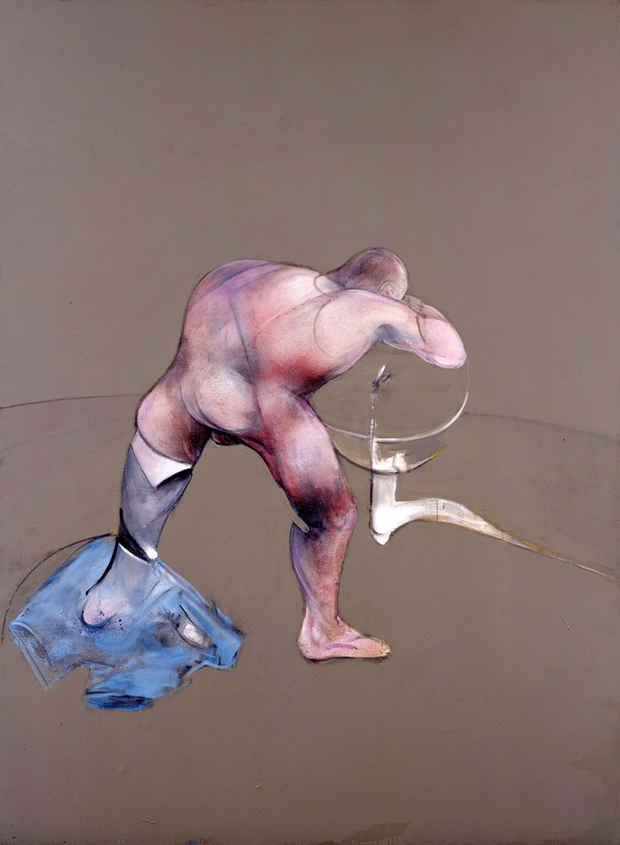"Alsoudani, Bacon, Guston, Rego" Exhibition
Marlborough Chelsea

This event has ended.
This exhibition brings together paintings of three world-renowned artists: Francis Bacon, Philip Guston and Paula Rego as well as recent paintings by the New York based artist Ahmed Alsoudani. Each of these artists confronts issues of violence and power, shifting between personal, political and historical events while maintaining a dialogue with the tradition of figurative painting. Bacon’s visceral approach to reality, Rego’s often menacing, Boschian stories and folk tales, and Guston’s singular and liberating figurative works of the 1970s are all reflected in the tumult and dynamism of Alsoudani’s work. Alsoudani’s synthesis of these influences lead to his signature conglomerations of symbolic form and figure.
In the accompanying catalog essay, Christian Viveros-Fauné begins, “These are images of long-forgotten dreams,” which could aptly serve as the subtitle for this exhibition. It is the Cave of Forgotten Dreams which refers to Werner Herzog’s film of the 32,000 year old Paleolithic paintings of bison, wild horses and rhinoceros found in the Chauvet caves in southern France. Viveros-Fauné continues, Herzog’s “words come to mind when considering the irrepressibly raw, intensely vital, disturbingly primal figures that make up this remarkable exhibition of paintings by Francis Bacon, Philip Guston, Paula Rego and Ahmed Alsoudani. Decidedly modern in every way, their works illuminate hidden corners of the mind as if seen by torchlight.”
Included in this exhibition are two major paintings by Francis Bacon, Study from the Human Body- Figure in Movement, 1982 and Man at a Washbasin, 1989-90. It is the nude human figure in both these paintings, truncated and at times in violent motion that is “the starting point for Bacon’s mythic imagination.” As Robert Rosenblum states in his 2002 essay for the Marlborough New York exhibition of paintings by Francis Bacon “within this world of widely varied nudity, Francis Bacon might be seen as pioneer and reigning monarch, shifting rapidly, as he could from the immediate stimulus of the always imperfect, often ugly flesh he scrutinized in real-life models and photographs all the way to the fantastic, theatrical constructions that could evoke everything from Aeschylus’s Oresteia to the nightmares of the twentieth century’s two world wars”.
After years of producing abstract paintings, Guston emerges as a storyteller and returns to figurative painting in 1970. Guston’s return to figurative painting coincided with an exhibition held the same year at Marlborough Gallery in New York. “I wanted to tell stories,” the artist states, “I got sick and tired of all that purity.” With its antecedents in the Paleolithic cave drawings, Guston talks about figurative painting, “I imagine wanting to paint as a cave man would. I should like to paint like a man who has never seen a painting.” Included in this exhibition is one of Philip Guston’s “late” paintings, Lower Level (1975), a luridly constructed figurative landscape.
For Paula Rego history, politics, literature, the struggle between genders and the folk tales of her Portuguese childhood have enabled her to create a rich tableau, which is both at times menacing, and complex. Rego is recognized for her searing narratives as can be seen in The Interrogator’s Garden (2000). Here the artist uses gender reversal as she observes: “I made him (the Interrogator) a woman so as to undermine him” thus adding comic relief to this already horrific scenario of torture, cruelty and masochism. Human Cargo (2007-2008), a monumental triptych drawn from events in the British news of human trafficking and “honor” killing, offers another vision of the world where according to Rego, “the men make the rules and the women have to obey.”
Ahmed Alsoudani describes his brightly-colored, densely-packed paintings to be about instability. As Christian Viveros-Fauné describes these paintings: “some viewers see chiefly glimpses of war and devastation from the artist’s native Iraq in his mostly untitled paintings, Alsoudani’s larger subject is nothing less than the murky depths of modern-day aesthetic consciousness. A yearning for aesthetic order actively limned from the world’s chaos, his signature narrative approach emerges, paradoxically, with every fragmented bit of pipeline and loose joint that emerges from his tangled landscapes.” While Alsoudani’s paintings draw on the story-telling narrative, the barely remembered dreams and nightmares and the visceral reality of the work of Bacon, Guston and Rego they also hearken back to an earlier time.
Media
Schedule
from February 21, 2013 to March 30, 2013
Opening Reception on 2013-02-21 from 18:00 to 20:00